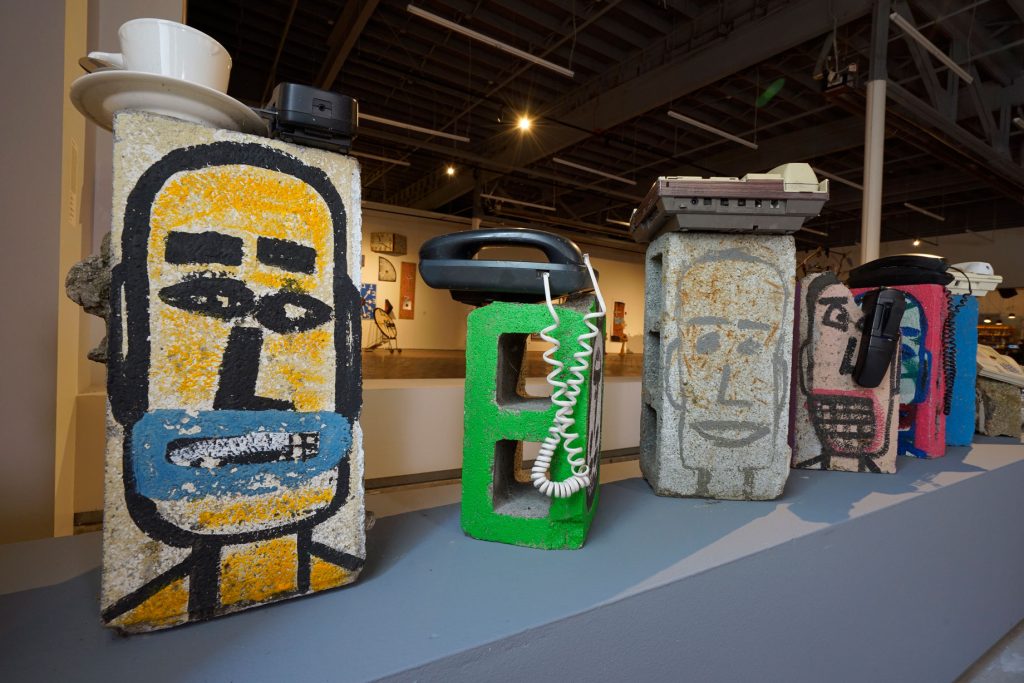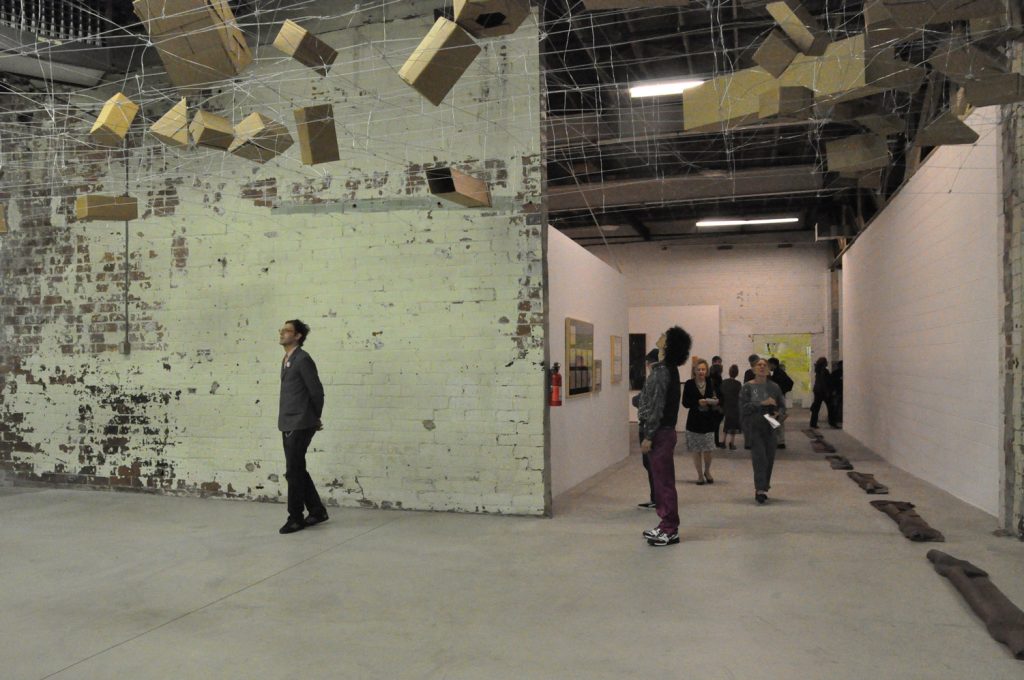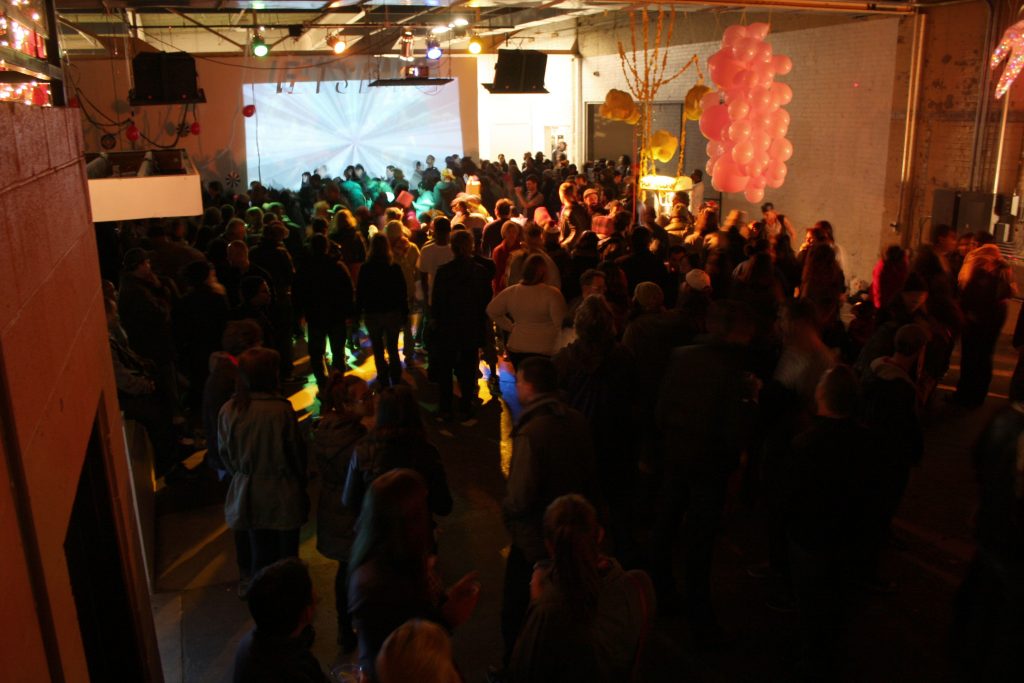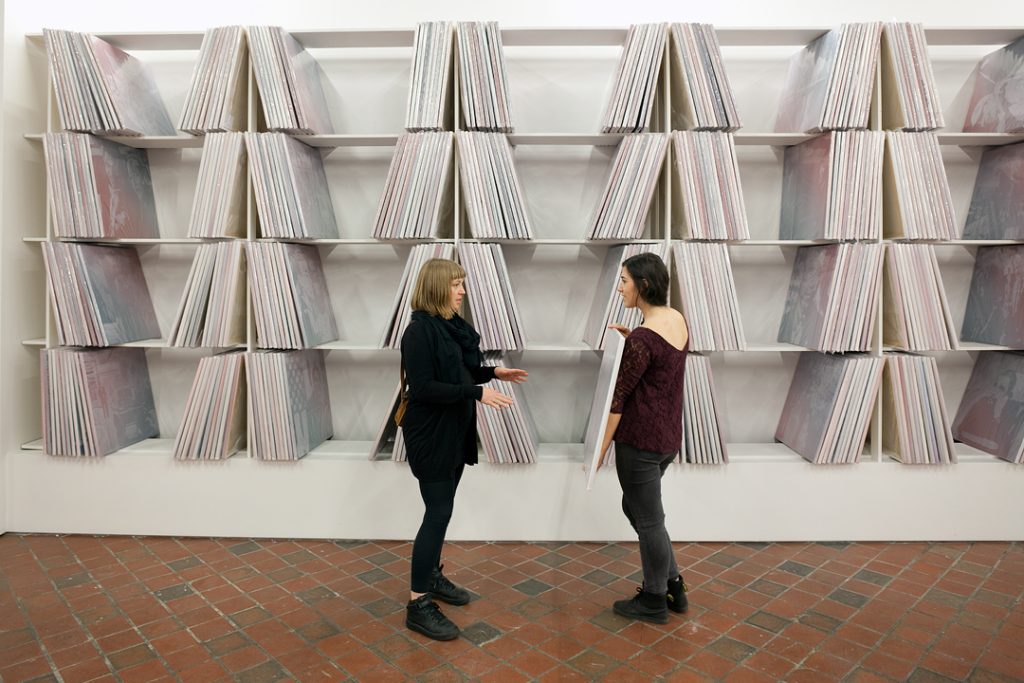About MOCAD
Our Mission
The Museum of Contemporary Art Detroit (MOCAD) presents exhibitions and programs exploring the best contemporary art, connecting Detroit and the global art world. MOCAD focuses on art as a means to nurture social change and human understanding, reflecting our community. We encourage innovative experimentation by artists, musicians, makers, cultural producers, and scholars to enrich all who participate and to educate visitors of all ages about the power of art. Whether from Detroit or worldwide, we welcome creative voices who can guide us to an equitable and inclusive future. We believe that art can change us, and it’s our responsibility to hold a space where challenge, acceptance, hope, and beauty can coincide.
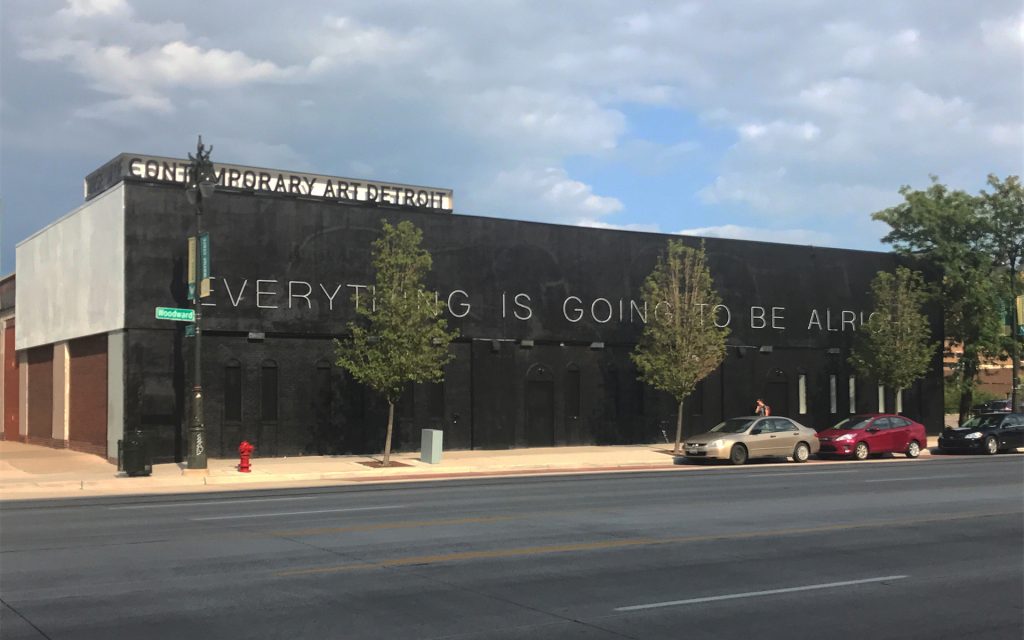
Exterior view of MOCAD, 2017. Photo: MOCAD.
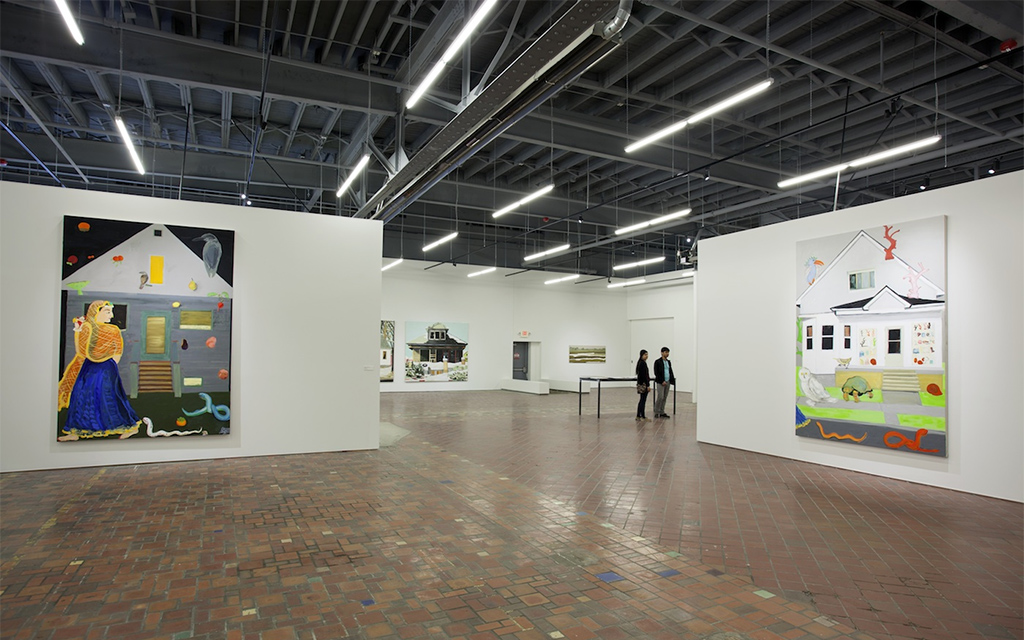
Paintings featured in the exhibition Nancy Mitchnick: Uncalibrated, installation view, 2016. Photo: MOCAD.
Our Space
Located on Woodward and Garfield between the Detroit Symphony Orchestra and the Detroit Institute of the Arts, Wayne State University, and the College for Creative Studies, the Museum is an innovative addition to Detroit’s vibrant Midtown neighborhood. It is a hub for exploring emerging ideas in the contemporary arts. The 22,000-square-foot building, a former auto dealership, has been renovated to maintain its historic character. With its raw, flexible, and cavernous spaces, the building is well-suited to exhibiting contemporary art. Our ambitious public programs include lectures, musical performances, films, literary readings, and educational activities for children.
MOCAD’s building has a ground-level entry with one accessible main entrance. It is one story with no stairs or elevators. The building is accessible by public transportation and has designated accessible parking spaces. The assembly areas of the building are adaptable to integrated and dispersed wheelchair seating as necessary. MOCAD’s exhibit areas and counters are wheelchair-accessible. Front desk staff can address questions about accessibility and service animal etiquette. Additional accessibility information can be found on our FAQ page. If you require accommodations, please contact us at 313-832-6622 or [email protected].
A Brief History of MOCAD
The Museum of Contemporary Art Detroit began in 1995 when Detroit Free Press art critic Marsha Miro and the late Susanne Feld Hilberry, renowned owner of the former Susanne Hilberry Gallery, envisioned a new museum to expand Detroit’s contemporary art community. By connecting to the national and international art world, MOCAD is a nexus for educating the public about contemporary arts and music and plays a critical role in helping regenerate Detroit through the arts.
MOCAD’s Founding Director, Miro, began working with a small circle of contemporary art lovers and collectors to help realize the idea. Miro approached the Detroit Institute of Art’s Richard Manoogian, who immediately saw the project’s importance and agreed to support it. In January 2004, Miro and an advisory group of Masco Foundation and Manoogian Foundation directors—Lillian Bauder, Sharon Rothwell, and Melonie Colaianne–began envisioning the Museum with the help of the arts community. At their suggestion, Manoogian purchased and began renovating a former car dealership on Woodward Avenue and Garfield Street in Midtown Detroit for what would become the Museum’s home. Miro suggested that the 22,000-square-foot building designed by famed Detroit industrial architect Albert Kahn at the turn of the century be rethought using architect Andrew Zago. Rather than building the ubiquitous “white box,” Zago designed the structure to reflect the building’s evolution, making it an assemblage of periods old and new.
Learn more about MOCAD’s history.
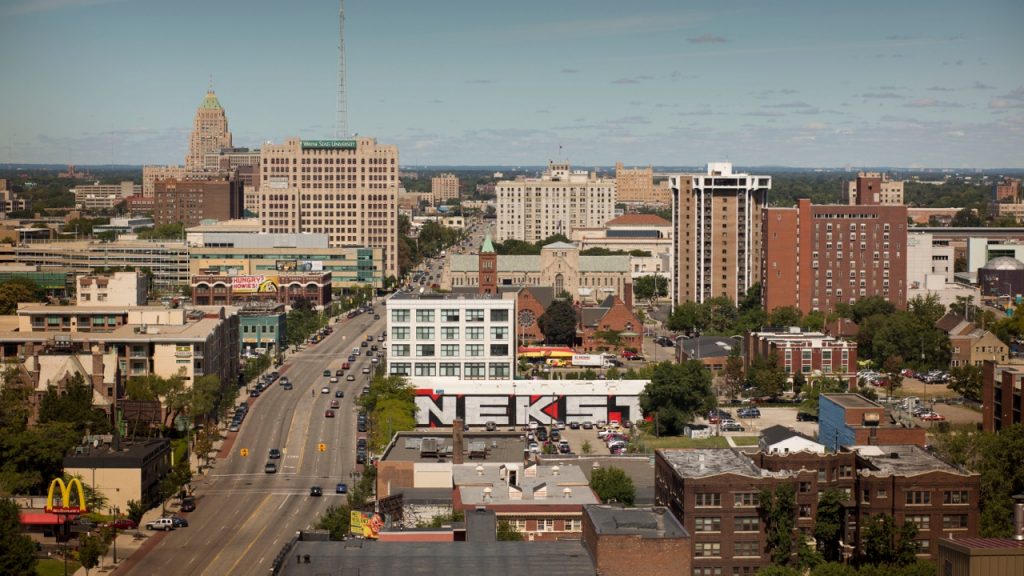
Aerial view of MOCAD with NEKST murals by DONT, VIZIE, POSE, OMENS, REVOK, and SKREW, 2013. Photo: Colin M. Day.
Know Before You Go
Rentals
Our 22,000-square-foot historic venue is available to host just about any occasion. To learn more, visit our Facility Rental page.
Press
For press releases and inquiries, visit our Press + Media page.
Our Impact
Founded in 2006, MOCAD pioneered Midtown, repurposing an abandoned warehouse, building up the neighborhood, and adding much-needed programming and space to the community. Detroit’s resurgence is due to important, impactful work such as this. MOCAD brings life and hope in unexpected ways, in addition to unprecedented access to the arts for all. Learn more by downloading our 2023 Impact Report.
Strategic Plan
Download a PDF of the Executive Summary of MOCAD’s Strategic Plan.

